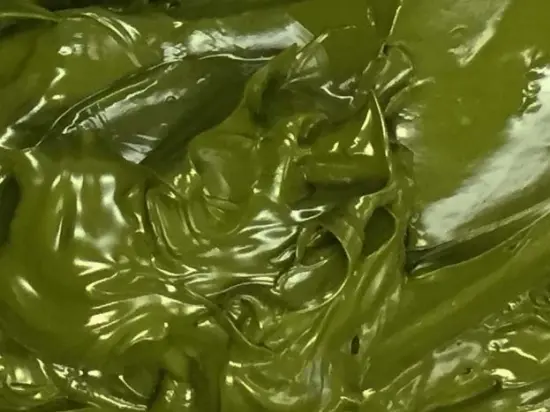
Tetraselmis suecica
- Fatty Acids
- Vitamins
- Minerals
- Carbohydrates
On Demand weeks

Introduction: Tetraselmis suecica
What is Tetraselmis suecica?
The green microalgae belongs to the Chlorodendraceae and like many other algae, produces oxygen through its photosynthesis. Due to its high cholorophyll content and rapid growth rate, Tetraselmis suecica is widely used in aquaculture, as feed for marine animals and in biotechnology, including the production of biofuels.
Due to different light intensities and other environmental conditions, there is a wide variation in growth and chlorophyll content. Tetraselmis suecica was first discovered near the coast of Sweden, which is why the microalga is named "Tetraselmis suecica", because "suecica" means Swedish in Latin.
Where does Tetraselmis suecica grow?
Tetraselmis suecica is commonly found in seawater and was first seen in the Baltic Sea of Sweden. Whether in parts of Europe, North and South America, Africa, Asia or Australia, the microalga is distributed worldwide and can be found in many different waters, including subtropical and tropical regions.
At moderate temperatures of 15-20°C, Tetraselmis suecica grows in open seas, brackish waters such as lagoons and salt pans, as well as in coastal waters of a salty environment. In addition, it is possible to grow the microalga in closed photobioreactors.
Uses for Tetraselmis suecica
Many different industrial and cultural sectors can benefit from Tetraselmis suecica, so the alga seems quite promising.
Due to the rich proteins, carbohydrates, vitamins and lipids, the microalgae is often used as feed for marine animals, making it a good source for aquaculture. In addition, by inserting Tetraselmis suecica, the growth rate of shrimp and fish, among others, is improved.
The oil contained in Tetraselmis suecica is valuable for the biofuel industry[3, 5]. This is because the large quantities of oil can be converted into biodiesel. In addition, biofuel production also benefits from the alga's rapid growth rate.
Polysaccharides can be used to produce bioplastics. Tetraselmis suecica has this ingredient and is therefore welcome in the production of bioplastics, as well as in the production of cellulose and starch.
The microalgae can also replace the substances contained in pharmaceutical products. Its bioactive compounds such as carotenoids, pigments and phytohormones are widely used in the cosmetic and pharmaceutical industries.
Tetraselmis suecica has the ability to remove heavy metals and ammonia from wastewater and is thus able to remove pollutants from water as well as serve as an indicator of water quality. Thus, the alga is a good tool in water purification and water technology[5, 6].
What is the difference between Tetraselmis suecica and Tetraselmis chuii?
Both green algae belong to the Chlorodendraceceae family. Both Tetraselmis suecica and Tetraselmis chuii are used in biotechnological industries.
The main difference between the two microalgae species is their growth behavior and physiological properties. Tetraselmis suecica was first discovered near Sweden on the coast of the Baltic Sea. In many different waters this algae species occurs and is distributed worldwide. As mentioned above, Tetraselmis suecica grows best in a salty environment and at a temperature of 15-20°C. The high chlorophyll content and fast growth rate are the typical characteristics for and known for Tetraselmis suecica.
Tetraselmis chuii, on the other hand, was first discovered in the USA, in a Chesapeake bay. It, too, can be found worldwide. However, the growth behavior here is different from Tetraselmis suecica , because Tetraselmis chuii develops best at low temperatures. Also the salty conditions must be higher in the environment. This green alga has particularly high oil and protein compared to the Tetraselmis suecica , for which the microalga is known and used.
Typical applications: Tetraselmis suecica
Typical applications
The algae Tetraselmis suecica belongs to the microalgae and is widespread worldwide and forms an important cornerstone in the aquatic ecosystems.
Tetraselmis suecica paste is a concentrated paste which can be used as live culture animal feed in aquaculture. Tetraselmis suecica paste is particularly suitable for the culture of shrimp, rotifers and copepods.
Due to its extremely broad nutrient profile of vitamins, minerals, fatty acids and carbohydrates, Tetraselmis suecica paste provides a healthy and balanced diet for the animals.
Sources:
- Tetraselmis suecica - G.M. Guiry in Guiry, M.D. & Guiry, G.M. 12 November 2020. AlgaeBase. World-wide electronic publication, National University of Ireland, Galway. (https://www.algaebase.org/search/species/detail/?species_id=51927)
- Tetraselmis suecica - Wikipedia (https://en.wikipedia.org/wiki/Tetraselmis_suecica)
- Lo E, Arora N, Philippidis GP. Physiological insights into enhanced lipid accumulation and temperature tolerance by Tetraselmis suecica ultraviolet mutants. Sci Total Environ. 2022 Sep 15;839:156361. doi: 10.1016/j.scitotenv.2022.156361. Epub 2022 May 29. PMID: 35640758. (https://pubmed.ncbi.nlm.nih.gov/35640758/)
- Sansone C, Galasso C, Orefice I, Nuzzo G, Luongo E, Cutignano A, Romano G, Brunet C, Fontana A, Esposito F, Ianora A. The green microalga Tetraselmis suecica reduces oxidative stress and induces repairing mechanisms in human cells. Sci Rep. 2017 Jan 24;7:41215. doi: 10.1038/srep41215. PMID: 28117410; PMCID: PMC5259714. (https://pubmed.ncbi.nlm.nih.gov/28117410/)
- Heo SW, Ryu BG, Nam K, Kim W, Yang JW. Simultaneous treatment of food-waste recycling wastewater and cultivation of Tetraselmis suecica for biodiesel production. Bioprocess Biosyst Eng. 2015 Jul;38(7):1393-8. doi: 10.1007/s00449-015-1380-0. Epub 2015 Apr 1. PMID: 25828926. (https://pubmed.ncbi.nlm.nih.gov/25828926/)
- Michels MH, Vaskoska M, Vermuë MH, Wijffels RH. Growth of Tetraselmis suecica in a tubular photobioreactor on wastewater from a fish farm. Water Res. 2014 Nov 15;65:290-6. doi: 10.1016/j.watres.2014.07.017. Epub 2014 Jul 19. PMID: 25150516. (https://pubmed.ncbi.nlm.nih.gov/25150516/)
- Jo WS, Yang KM, Park HS, Kim GY, Nam BH, Jeong MH, Choi YJ. Effect of Microalgal Extracts of Tetraselmis suecica against UVB-Induced Photoaging in Human Skin Fibroblasts. Toxicol Res. 2012 Dec;28(4):241-8. doi: 10.5487/TR.2012.28.4.241. PMID: 24278616; PMCID: PMC3834434. (https://pubmed.ncbi.nlm.nih.gov/24278616/)

ALGANEX certificate system
Reply within twelve hours